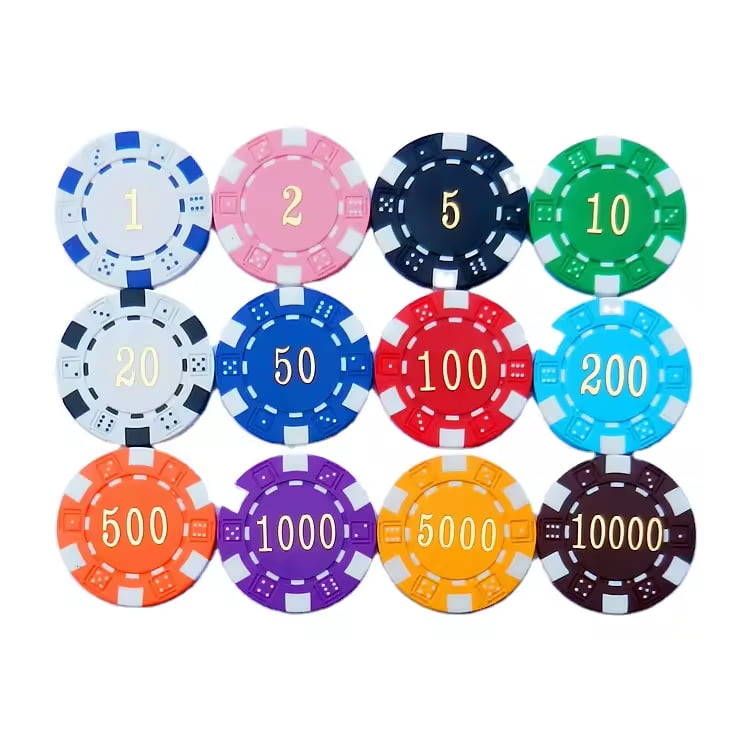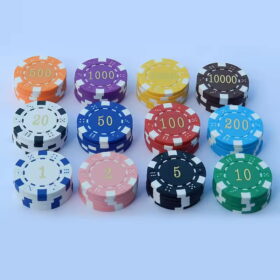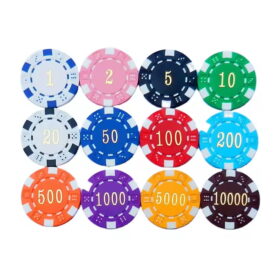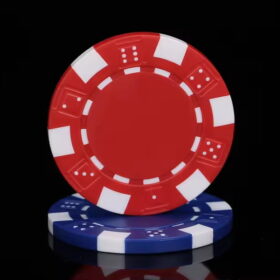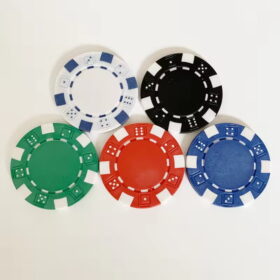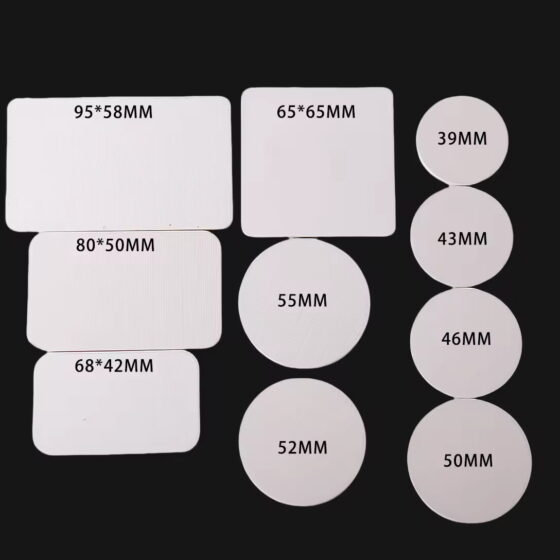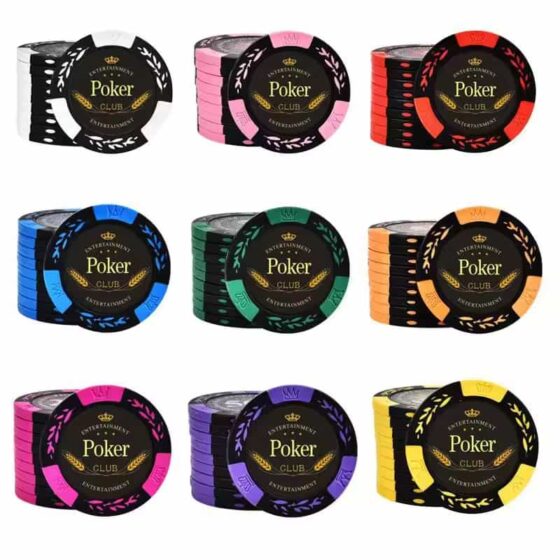“Hot stamp” poker chips are a classic style of casino or gaming chips that feature a design stamped onto the surface using heat and foil. Some Bar or restaurant use it as free drink or meal token. Here’s what you need to know about them:
Features of Hot Stamp Poker Chips:
-
Manufacturing Process
-
A heated metal die presses a thin foil design into the chip’s surface, creating a metallic or colored imprint.
-
The process is durable but less detailed compared to inlaid or printed designs.
-
-
Materials
-
Typically made of clay composite or compression-molded materials (not 100% clay, despite some being marketed as “clay chips”).
-
Some cheaper versions may be plastic or metal-slugged for weight.
-
-
Appearance
-
The stamped design often has a shiny, metallic finish (gold, silver, or colored foil).
-
Simple, bold designs (e.g., denominations, casino logos, or basic patterns).
-
-
Durability
-
Hot stamps can wear off over time with heavy use.
-
Not as long-lasting as modern inlaid chips (like Paulson or high-end ceramics).
-
-
Weight & Feel
-
Typically 8.5–14 grams, depending on materials.
-
Favored by some players for their traditional “clay-like” sound and texture.
-
Pros & Cons of Hot Stamp Chips:
✔ Classic, vintage appeal – Popular in old-school casinos and home games.
✔ Affordable – Often cheaper than premium inlaid chips.
✔ Good weight & stackability – Better feel than cheap plastic chips.
✖ Less durable – Stamps can fade or chip over time.
✖ Limited customization – Harder to do intricate designs compared to printed ceramics.
✖ Not as premium – High-stakes games often use inlaid or high-end ceramics.
Common Uses:
-
Casino chips (older or budget-friendly casinos).
-
Home poker games (affordable yet professional feel).
-
Collectors’ items (vintage hot stamp chips from historic casinos).
Alternatives to Hot Stamp Chips:
-
Inlaid chips (e.g., Paulson, Apache) – More durable, detailed designs.
-
Ceramic chips – Fully customizable, vibrant prints.
-
Plastic chips – Cheaper but lower quality, ABS Dice Poker Chip
Would you like recommendations for purchasing hot stamp chips or identifying vintage ones?
 Winsir Industry (Shanghai) Co., Ltd.
Winsir Industry (Shanghai) Co., Ltd.
